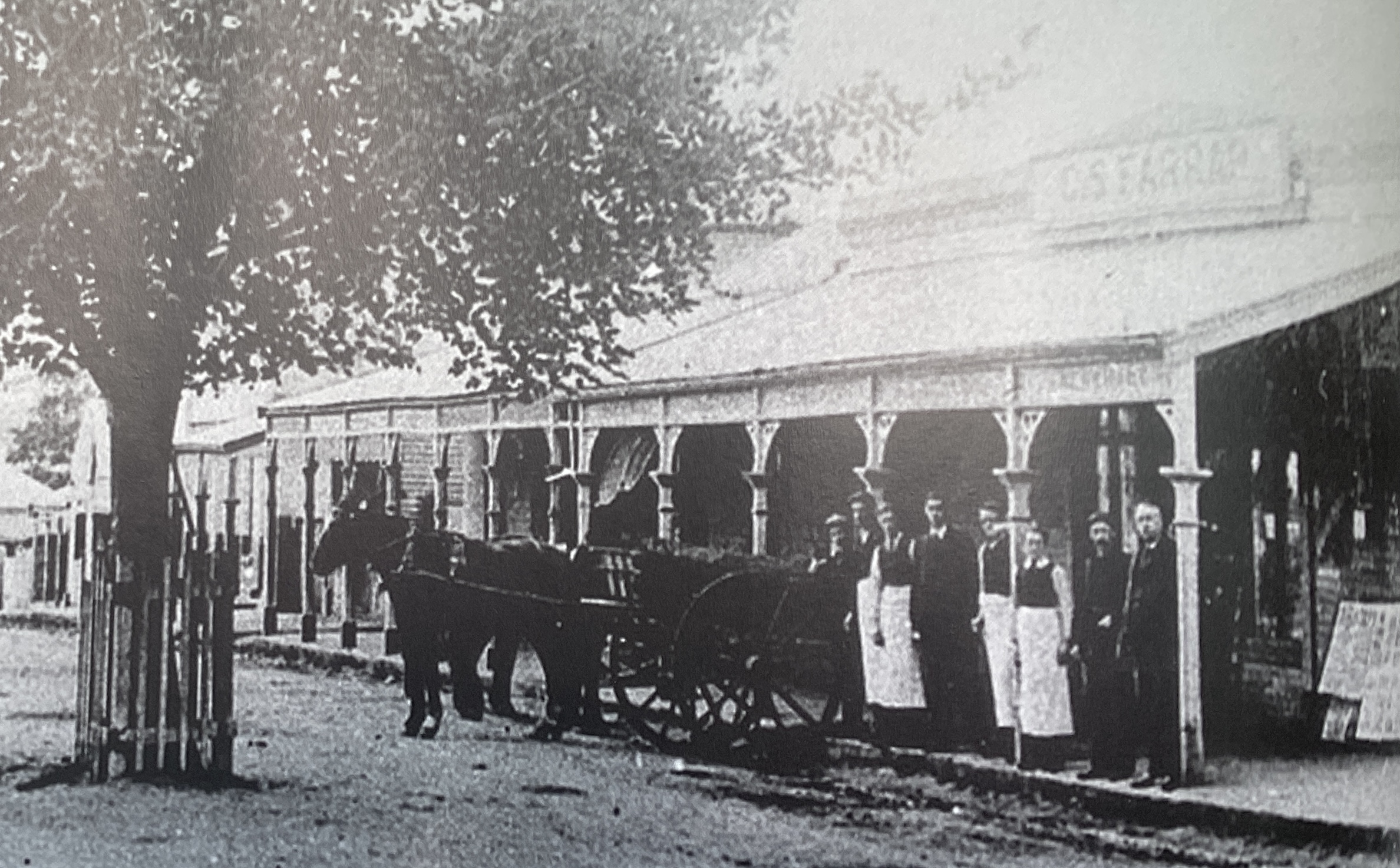
Above: The Farrar family ran two general stores on Main St Birregurra and two more in Colac.
Quiet place much of the time these days but the old buildings of Birregurra speak to a rich heritage and important role in an Australia now largely gone.
Dating to the Methodists’ proselytising Buntingdale Aboriginal Mission efforts in 1836, the year after John Batman and John Pascoe Fawkner arrived in Melbourne, Birregurra hosted its earliest commercial activities soon after.
The 1840s saw hotels, coach houses, general stores and post offices erected to service travellers on the early Geelong-Colac road.
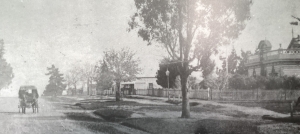
Main St Birregurra in the early 1900s.
Like just about every town in the country, it was established close to a water course, both Birregurra Creek and the Barwon River, and known as Bowden’s Point for a captain of that name working as an overseer at what was an ill-fated mission unsuccessful in bringing in local warring tribes.
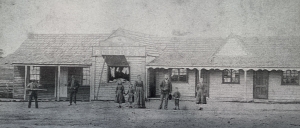
41 to 45 Main St, McCallum’s timber shopfronts with butcher and boarding house … and shotgun.
The town was later named for the indigenous term ‘burai gurray’, or kangaroo camp, a springs site in the area and surveyed in 1862 before land sales in ’63. The sales triggered the arrival of trades and craftsfolk, blacksmiths, bootmakers, flour millers, butchers, bakers, chippies, shopkeepers, saddlers and others.
Birregurra-on-the-Barwon, as the town was also called, was growing swiftly with more to come when the rail line between Geelong and Warrnambool arrived in 1877, and more again when the line to the new town of Forrest came into action in 1891.
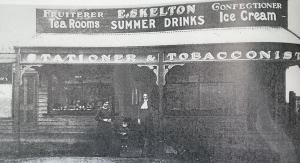
Skelton’s midwifery hospital, tea-rooms, tobacconist, stationer, milk bar, fruit shop … you name it.
These lines opened the town to the transport of all manner of goods: timber, cattle, sheep, wheat, oats, barley, potatoes, onions, peas. The town’s saleyards became the busiest in the region.
Inns such as the Traveller’s Rest and Native Youth hotel served as staging posts for Cobb & Co coaches in the 1860s. The Commercial Hotel, built 1870, was burned down twice; first by a lamp fall and later as nappies were being aired out. Curious.
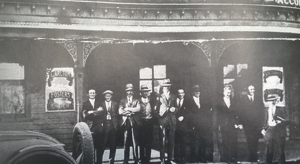
Patrons outside the Commercial Hotel some time between two fires that burned it down in 1900 and 1931.
Pengilley’s Royal Mail pub site started life as a general store and blacksmith before a two-storey hotel was built in 1874 with rooms, stables, a barber, bootmaker and visiting dentists and solicitors. It was bowled over in 1937 and rebuilt in its present-day single-storey incarnation.
Verandas, bluestone easements, hitching posts and pickets, even tall trees, graced the front of banks, stables, garages, a hospital/tobacconist, boarding houses, a coffee palace, the mechanics institute and various stores. Follow the town’s well-signposted heritage trail and you’ll find a good few still survive.
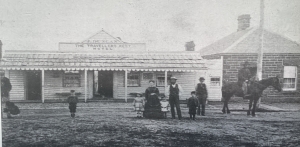
The Travellers Rest hotel, part of the first Birregurra settlement from around 1860.
The Birregurra District Historical Centre, some years back now, produced a neat book capturing the town in its varied attitudes and appearances from 1860 onwards. Birregurra Businesses Past and Present is horizontal A4 in format, its images are all black and white, many of them blurry, furry or under- or over-exposed.
The images it contains, reproduced here, are an important repository of the town’s original bustle and enterprise.
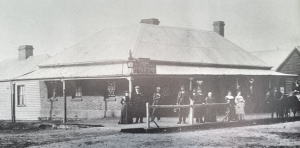
The Native Youth Hotel, initially built as a Cobb & Co staging post in 1864. Hosted billards, quoits and, when required, inquests. Delicensed in 1921.
A chapter replicating old advertisements by Birre business-houses makes for a curious trek through yesteryear, particularly through the pages of papers such as the Birregurra & Winchelsea Star and Lorne Mercury.
It’s all a far cry from today’s relaxed Birregurra but there’s little doubt the old Birre is still a must-stop point for food and art lovers and anyone keen to throw themselves into smart country markets and home-grown produce.
With a bit of luck, you won’t find yourself besieged by too many proselytisers.
This article appeared in the Geelong Advertiser 30 December 2024.


